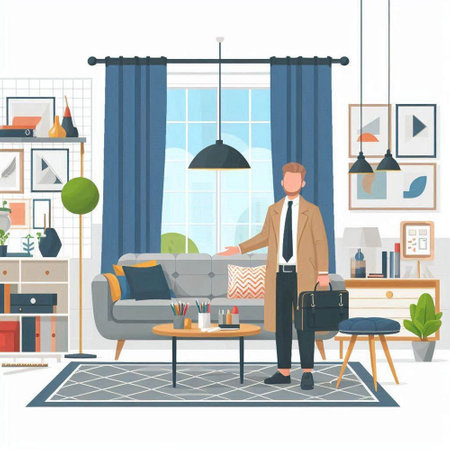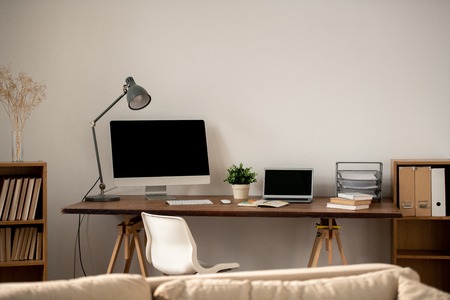Understanding Common Sources of Home Office Noise
When working from a small home office, noise can be one of the biggest obstacles to productivity. To effectively reduce distractions, it’s important to first identify where unwanted sounds are coming from. Typical indoor noise sources include household appliances like washing machines, dishwashers, and HVAC systems. If you share your space with others, conversations, children playing, or pets can also contribute to the noise level. In apartment complexes or multi-family homes, sounds from neighboring units—like footsteps above you or music next door—can easily seep through walls and ceilings.
Outdoor noises are equally disruptive in many neighborhoods across the U.S. Common culprits include street traffic, emergency vehicle sirens, garbage trucks, lawnmowers, and even the occasional barking dog. Depending on your location, construction projects or frequent deliveries might also add to the background clatter. By recognizing both indoor and outdoor sources of noise that affect your workspace, you’re better prepared to find solutions tailored to your unique environment.
Soundproofing Tips for Walls, Doors, and Windows
When your home office is close to high-traffic areas or thin walls, outside noise can be a constant distraction. Improving insulation and sealing gaps are two of the most effective strategies to reduce sound transmission in your workspace. Start by identifying where sound is entering—often, the culprits are poorly insulated walls, hollow-core doors, and single-pane windows.
Upgrade Your Insulation
If you have control over renovations, consider adding acoustic insulation inside the walls. Soundproofing foam panels or dense fiberglass batts can make a big difference in blocking external noise. For renters or those on a budget, removable wall hangings like thick tapestries or bookcases filled with books can also help absorb sound.
Seal Gaps and Cracks
No matter how well-insulated your office may be, noise will seep through any small opening. Pay special attention to cracks around window frames, under doors, and along baseboards. Use weatherstripping or acoustic sealant to close these gaps. Door sweeps are especially useful for blocking sound that travels under doors.
Comparison Table: Soundproofing Solutions
| Area | Low-Cost Solution | High-Efficiency Solution |
|---|---|---|
| Walls | Hanging tapestries or using bookshelves as barriers | Adding acoustic insulation or installing mass loaded vinyl panels |
| Doors | Installing a door sweep and weatherstripping tape | Replacing with solid-core doors or applying soundproof blankets |
| Windows | Sealing edges with weatherstripping or using heavy curtains | Upgrading to double-pane windows or adding acrylic window inserts |
By combining these practical upgrades, you can significantly cut down on unwanted sounds and create a more peaceful work environment right at home. Even small changes can make a noticeable impact on your focus and productivity.

3. Choosing the Right Office Location
One of the most effective ways to reduce noise in your small home office is by carefully selecting its location within your home. If possible, choose a room or corner that is furthest away from high-traffic areas like the kitchen, living room, or entryways. Spaces that share walls with quieter rooms, such as a guest bedroom or storage area, tend to be less affected by household noise. It’s also wise to consider your proximity to windows that face busy streets or neighbors’ yards, as these can bring in unwanted outside sounds. Basements and upper floors often provide more insulation from both indoor and outdoor noise compared to ground-level rooms. By prioritizing a spot that naturally buffers sound, you set yourself up for a more peaceful work environment and minimize distractions before you even start adding any soundproofing solutions.
4. Using Noise-Canceling Devices and White Noise
One of the most effective ways to reduce unwanted sounds in your small home office is to use technology specifically designed for noise control. Noise-canceling headphones, white noise machines, and mobile apps can all play a crucial role in helping you maintain focus and productivity. Here’s how these tools work and what makes them so valuable for remote work environments.
Noise-Canceling Headphones
Noise-canceling headphones actively block out ambient sounds using built-in microphones and advanced sound wave technology. They’re ideal if you share your space with family or roommates, or if your workspace is near a busy street. Many popular brands offer models that are comfortable enough for all-day wear, allowing you to concentrate even during household commotion.
White Noise Machines
White noise machines create a consistent background sound that masks sudden or distracting noises, like barking dogs or passing cars. By filling the audio environment with neutral sounds—such as rainfall, ocean waves, or static—they help your brain tune out interruptions. These devices are compact, easy to operate, and can be especially helpful if you’re sensitive to irregular noises.
Noise-Canceling and White Noise Apps
If you prefer not to buy new hardware, there are plenty of apps available for both smartphones and computers that offer customizable white noise and soundscapes. Some apps allow you to mix different ambient sounds or set timers to match your work schedule. This flexibility makes it easier than ever to tailor your workspace’s sound environment without breaking the bank.
Comparison Table: Noise Reduction Tools
| Tool | Main Benefit | Best For | Price Range |
|---|---|---|---|
| Noise-Canceling Headphones | Blocks external noises directly at your ears | Noisy households; shared spaces | $50–$350+ |
| White Noise Machine | Masks unpredictable background sounds | Offices near traffic; light sleepers | $20–$100 |
| White Noise/Noise-Canceling Apps | Flexible, customizable soundscapes; budget-friendly | Anyone with a smartphone/computer; frequent travelers | Free–$10/month (subscription) |
Pro Tip:
If youre working in a particularly noisy environment, try combining these solutions—for example, using noise-canceling headphones along with a white noise app—to maximize your focus and comfort.
5. Establishing Quiet Hours with Roommates or Family
One of the most effective ways to reduce noise in a small home office is by setting clear boundaries with roommates or family members. Start by having an open and honest conversation about your work needs. Explain why quiet time is important for your productivity, and listen to their schedules and concerns as well. Together, identify blocks of time during the day when you need minimal interruptions—these can become your designated “quiet hours.” Once everyone agrees on these times, reinforce them by posting a visible schedule near your workspace or using shared digital calendars. If conflicts arise, revisit the conversation and make adjustments as needed. Encourage respectful communication; for example, agree on signals like a closed door or a sign that means you’re in focus mode. By working together and maintaining mutual respect, you’ll create a more supportive environment where everyone’s needs are considered and distractions are minimized.
6. Incorporating Soft Furnishings and Decor
One of the most effective and budget-friendly ways to reduce noise in a small home office is by introducing soft furnishings and thoughtful decor choices. Hard surfaces, such as bare floors and walls, tend to reflect sound waves, which can amplify echo and make even minor noises more distracting. To combat this, consider adding carpets or area rugs to your workspace. Thick, plush carpets are especially good at absorbing sound and preventing it from bouncing around the room. Curtains made from heavy fabrics not only block out light but also act as a barrier against outside noise, especially if your office is near a busy street or noisy household areas. Even fabric-covered furniture like upholstered chairs or couches can make a noticeable difference by soaking up ambient sounds that would otherwise linger. For added benefit, toss in some decorative throw pillows or hang fabric wall art to further dampen noise. Layering these elements together creates a quieter, cozier, and more focused environment—perfect for boosting productivity in your small home office.


